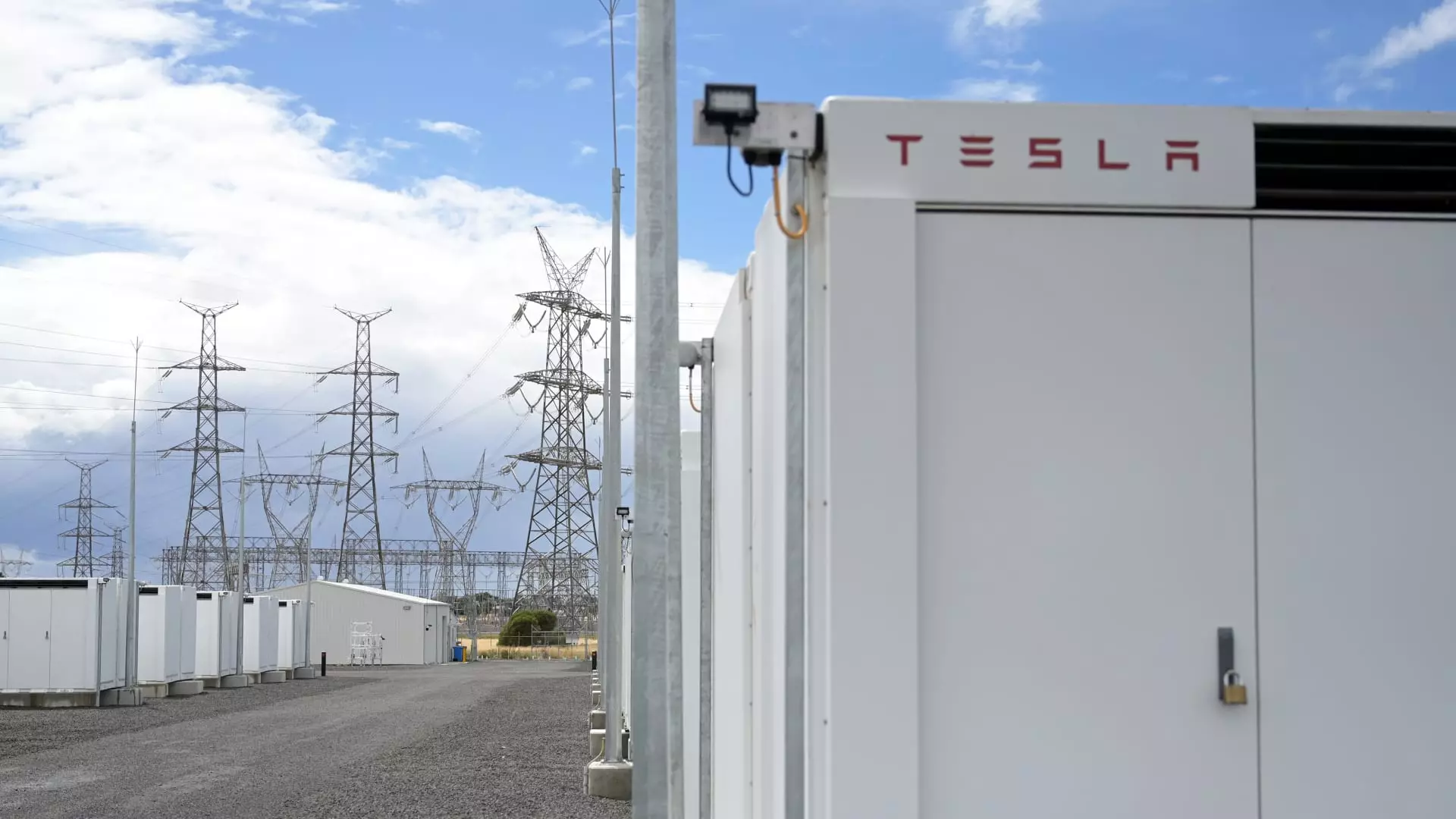In a groundbreaking move, Tesla has made strides into the Chinese renewable energy sector by securing its first deal to establish a grid-scale battery power plant in Shanghai. This ambitious project is marked as the largest of its kind in China once it comes to fruition. The significance of this venture becomes even more pronounced against the backdrop of heightened tensions between the U.S. and China, particularly in trade relations. It showcases not only Tesla’s resilience but also its commitment to leading the green energy revolution, even in challenging geopolitical environments.
With the world increasingly pivoting toward sustainable energy solutions, utility-scale battery systems are vital in harmonizing the fluctuating dynamics of energy supply and demand caused by renewable sources like solar and wind. Tesla’s foray into this sector is not merely a business opportunity; it’s a decisive move that demonstrates the urgency for countries, especially those with ambitious climate goals, to invest in robust energy storage solutions. As the clearest embodiment of Tesla’s vision, this project aims to mitigate the mismatches in energy availability, ensuring urban areas can maintain stable power supplies.
A Strategic Partnership Amidst Turmoil
The investment, valued at approximately 4 billion yuan ($556 million), is a formidable collaboration involving Tesla, the Shanghai local government, and China Kangfu International Leasing. Such partnerships are critical in today’s market, especially considering that Tesla faces stiff competition from established players like CATL and BYD, both of whom are key drivers in the battery manufacturing landscape. The burgeoning rivalry highlights the complexities of international commerce and innovation in the face of political tumult.
Tesla’s ability to navigate this landscape is impressive, particularly since CATL dominates the global market with around 40% share—a statistic that brings to light the challenges Tesla must overcome to assert its competitive edge. This rivalry drives innovation, ensuring that consumers can access more advanced and affordable energy solutions. The intricacies deepen further as these companies often work together; CATL is poised to supply battery cells for Tesla’s Megapacks, blurring the lines between competition and collaboration.
Innovating Under Pressure
Tesla’s announcement on the Chinese social media platform Weibo emphasizes the role of its “smart regulator” technology, which improves the efficiency of electricity distribution in urban environments. This innovation is not merely a technological feat; it positions Tesla as a pivotal player in the quest for energy efficiency in rapidly urbanizing locations. It is a reminder that even the most challenging operational conditions can yield innovative environmental solutions.
Moreover, the timing of the announcement is relevant. Given the backdrop of increasingly confrontational trade policies and tariffs imposed by the previous U.S. administration, one could view this project as a statement of defiance against nationalistic tendencies in business. Tesla’s ventures into China could be perceived as a strategic expansion that defies political uncertainties—an embodiment of capitalism and collaboration transcending geopolitical barriers.
Future Outlook and Global Implications
As we consider the implications of Tesla’s initiative to export its Megapacks to Europe and Asia, it becomes clear that the demand for grid-scale battery installations is surging. The Internal Energy Agency reported impressive growth in global energy storage systems, suggesting that the world is rapidly moving towards solutions that embrace sustainability while ensuring energy reliability.
China’s new target of adding 5 gigawatts of battery power by 2025 signifies an urgent and expansive shift towards renewable infrastructure—potentially positioning the country as a global leader in battery technology. In this context, Tesla’s engagement with the Chinese market can be seen as a vital step toward not just stabilizing its operations but also contributing to a larger global sustainability effort.
Tesla’s foray into this crucial energy sector embodies a powerful vision that seeks to marry innovation with necessity, amidst the clashing landscapes of global power dynamics. It isn’t just a business deal; it’s a representation of the future of energy—one that demands agile response and collaborative spirit in the face of uncertainty. In this merging of purpose and opportunity, Tesla has truly illustrated what it means to lead in the age of clean energy revolution.

